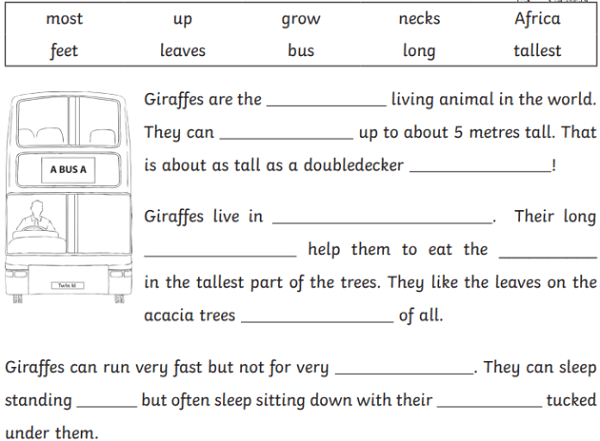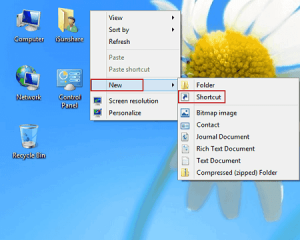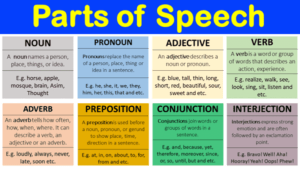Cloze passage- Fill in the blanks with the most appropriate words to complete the passage:
Passage:
In the heart of the city, there was a beautiful (1) _____ with lush green (2) _____ and colorful (3) _____. People often visited this park to escape the hustle and bustle of (4) _____ life. The park had a serene (5) _____, with a small (6) _____ in the center where ducks and swans swam gracefully.
Children could be seen playing on the (7) _____, and families picnicking on the (8) _____. The park was also home to a variety of (9) _____, including squirrels, rabbits, and songbirds. It was a peaceful (10) _____, where one could relax and forget about their worries for a while.
Words to choose from:
- Fountain
- Trees
- Flowers
- Urban
- Atmosphere
- Pond
- Playground
- Grass
- Wildlife
- Oasis
Fill in the blanks with the appropriate words, and let me know your answers!
What is Cloze passage
A cloze passage, also known as a cloze test or cloze exercise, is a language comprehension activity or assessment in which words or phrases are removed from a passage of text, and the reader is required to fill in the missing words or phrases with the most appropriate choices. This activity is designed to test a person’s understanding of the context and their vocabulary and grammatical skills.
Cloze passages are commonly used in language learning and assessment to:
- Evaluate comprehension: They assess how well a person understands the content of a given text.
- Assess vocabulary: They test a person’s knowledge of words and phrases that fit logically within a particular context.
- Test grammar and syntax: Filling in the blanks often requires proper grammatical structure and syntax to make the passage coherent.
- Encourage critical thinking: Readers must use context clues to determine the missing words or phrases, which promotes critical thinking and problem-solving skills.
Cloze passages can range in difficulty, with some having only a few blanks to fill in and others having many. They are used in educational settings, language proficiency exams, and various forms of reading assessments to gauge a person’s language skills and comprehension abilities.
Who is Required Cloze passage
A “required cloze passage” typically refers to a specific type of cloze test or exercise that is commonly used in language assessments and educational contexts. In a required cloze passage, the reader is presented with a text in which certain words or phrases have been removed, and they are explicitly required to fill in the missing words or phrases with the correct choices provided.
Here’s how a required cloze passage typically works:
- The passage is provided with gaps or blanks where words or phrases should go.
- A list of words or phrases is given, often as options, and the reader must choose the correct word or phrase from this list to fill in each blank.
- The choices are usually related to the context of the passage, and the reader’s task is to select the words that make the passage coherent and logical.
- The reader must choose the correct words based on their understanding of the passage and their knowledge of vocabulary and grammar.
Required cloze passages are used in language learning and assessment to evaluate a person’s reading comprehension, vocabulary knowledge, and grammatical accuracy. They are often found in standardized language proficiency tests, classroom assessments, and language textbooks as a way to develop and assess language skills.
When is Required Cloze passage
A “required cloze passage” is typically encountered in various educational and assessment contexts. Here are some situations when you might come across a required cloze passage:
- Language Proficiency Tests: Many language proficiency exams, such as TOEFL, IELTS, SAT, and GRE, include cloze passages as part of their reading or language sections. Test takers are required to fill in the blanks in these passages with the correct words or phrases from a provided list.
- Educational Assessments: Teachers and educators use required cloze passages as assessment tools to evaluate students’ reading comprehension, vocabulary, and grammar skills. They can be used in regular classroom assessments or standardized tests.
- Language Learning Materials: Required cloze passages are often included in language learning textbooks and workbooks. They provide learners with opportunities to practice their language skills by filling in the missing words within a context.
- Online Learning Platforms: Some online language learning platforms incorporate required cloze passages as interactive exercises to help learners improve their language skills. Learners are asked to fill in the blanks with appropriate words to complete sentences or paragraphs.
- Job Assessments: In some job application processes, especially for positions requiring strong language skills, applicants may be asked to complete a required cloze passage as part of the application or assessment process.
In all these contexts, the purpose of a required cloze passage is to evaluate a person’s ability to understand written text, use context clues to make informed choices about missing words or phrases, and demonstrate proficiency in vocabulary and grammar. It’s an effective tool for assessing language skills and comprehension.
Where is Required Cloze passage

A required cloze passage can be found in various places and contexts, depending on its intended purpose. Here are some common places where you might encounter required cloze passages:
- Standardized Tests: Required cloze passages are often a part of standardized tests used for assessing language proficiency. These tests can be administered at test centers or online.
- Educational Materials: Required cloze passages are frequently included in educational textbooks and workbooks, particularly those designed to teach and assess reading comprehension, vocabulary, and grammar skills.
- Language Learning Apps and Websites: Online language learning platforms and apps often incorporate required cloze passages as interactive exercises to help learners practice and improve their language skills.
- Language Classes: Teachers and educators may use required cloze passages as in-class or homework assignments to assess students’ understanding of course materials and language proficiency.
- Job Applications: In some job application processes, especially for positions that require strong language skills, employers may include a required cloze passage as part of the application or assessment process.
- Language Assessment Centers: Language assessment centers and language schools may use required cloze passages in their evaluation procedures for students and candidates seeking language proficiency certification.
- Online Assessments: Some websites and online learning platforms use required cloze passages as a form of self-assessment or practice for individuals looking to improve their language skills.
In essence, required cloze passages can be found in both formal and informal learning and assessment contexts. They serve as a valuable tool for evaluating and improving language comprehension, vocabulary, and grammar skills. Depending on the specific context, the content and difficulty level of required cloze passages can vary widely.
How is Required Cloze passage
A required cloze passage is a language comprehension exercise in which certain words or phrases are intentionally removed from a text, and the reader is required to fill in the blanks with the correct words or phrases from a provided list. Here’s how a required cloze passage typically works:
- Presented Text: You are given a passage of text that contains gaps or blanks where words or phrases have been removed. These gaps are usually indicated by underscores, dashes, or simply empty spaces.
- Word Bank: Along with the text, you are provided with a list of words or phrases that can be used to fill in the blanks. These choices are often related to the context of the passage.
- Task: Your task is to read the passage carefully and select the correct word or phrase from the word bank to complete each blank. You should choose the word or phrase that makes the passage coherent, logical, and grammatically correct.
- Use Context Clues: To make the correct choices, you’ll need to rely on context clues within the passage. This means considering the meaning of the surrounding words and sentences to determine what fits best in the blank.
- Answering: Fill in the blanks with your chosen words or phrases. The goal is to make the passage read smoothly and make sense when all the blanks are filled.
- Scoring: In formal assessments, your responses are typically scored based on how accurately you filled in the blanks. Incorrect choices may result in points deducted or not counted toward your final score.
Required cloze passages are commonly used in language proficiency tests, educational assessments, and language learning materials to evaluate reading comprehension, vocabulary, and grammar skills. They provide a practical way to test your understanding of written text and your ability to use context to select appropriate words or phrases.
Case Study on Cloze passage
Title: Improving Reading Comprehension through Cloze Passages
Background: An elementary school teacher, Ms. Smith, noticed that her students were struggling with reading comprehension. Many of her students were having difficulty understanding and retaining the content they were reading. She decided to implement a cloze passage exercise as part of her teaching strategy to address this issue.
Objectives:
- To improve students’ reading comprehension skills.
- To enhance students’ vocabulary and contextual understanding.
- To encourage critical thinking and problem-solving.
Implementation:
- Assessment: Ms. Smith began by assessing the reading levels of her students. She selected a cloze passage appropriate for their grade level.
- Introduction: Ms. Smith introduced the concept of a cloze passage to her students. She explained that certain words in a text would be missing, and their task was to fill in the blanks with the most appropriate words from a word bank.
- Selecting a Passage: She chose a passage from a children’s book that aligned with the curriculum. The passage was about a young girl who went on an adventure in a magical forest.
- Word Bank: Ms. Smith prepared a word bank containing words relevant to the passage. She included synonyms and contextually appropriate words to challenge her students.
- Class Activity: In the classroom, Ms. Smith distributed copies of the passage with the blanks and the word bank. She encouraged her students to read the passage carefully and then fill in the blanks with words from the word bank.
- Discussion: After completing the exercise, Ms. Smith led a class discussion. She asked students to explain why they chose certain words for each blank, promoting critical thinking and discussion.
- Feedback: Ms. Smith provided feedback on each student’s responses, emphasizing not only correct answers but also the thought process behind their choices.
- Regular Practice: She incorporated cloze passages as a regular part of her reading comprehension lessons. Over time, she gradually increased the complexity of the passages to challenge her students.
Results:
- Ms. Smith observed significant improvements in her students’ reading comprehension skills.
- Students began to use context clues more effectively to fill in the blanks.
- Vocabulary skills improved as students encountered new words in context.
- Classroom discussions became more engaging as students shared their thought processes.
Conclusion: The implementation of cloze passages effectively addressed the reading comprehension challenges faced by Ms. Smith’s students. It not only improved their ability to understand and retain text but also fostered critical thinking and vocabulary development. As a result, Ms. Smith continued to use cloze passages as a valuable tool in her teaching strategy to enhance her students’ language and comprehension skills.
White paper on Cloze passage
A white paper on “Cloze Passages in Educational Assessment and Language Learning”
Abstract: This white paper explores the significance of cloze passages in educational assessment and language learning. It delves into the history, theory, and practical applications of cloze passages, highlighting their effectiveness in evaluating reading comprehension, vocabulary acquisition, and grammar proficiency. Additionally, it discusses the benefits and challenges associated with the use of cloze passages in various educational contexts.
Table of Contents:
- Introduction
- Definition of Cloze Passages
- Historical Background
- Theoretical Foundation
- Cloze Procedure and Cognitive Psychology
- Language Acquisition Theories
- Cloze Passages in Educational Assessment
- Purpose and Goals
- Types of Educational Assessments
- Advantages and Limitations
- Cloze Passages in Language Learning
- Pedagogical Strategies
- Vocabulary Development
- Grammar Acquisition
- Effective Implementation of Cloze Passages
- Creating High-Quality Cloze Passages
- Contextual Relevance
- Word Bank Design
- Assessment and Evaluation
- Scoring Methods
- Analyzing Results
- Addressing Common Challenges
- Benefits of Cloze Passages
- Personalized Learning
- Formative Assessment
- Diagnostic Insights
- Challenges and Considerations
- Test Validity and Reliability
- Test-Taker Experience
- Cultural Sensitivity
- Future Directions
- Technological Advancements
- Adaptive Testing
- Multilingual Applications
- Conclusion
- Recap of Key Findings
- The Ongoing Relevance of Cloze Passages
Introduction: Cloze passages have been used for decades as a valuable tool in assessing reading comprehension, vocabulary acquisition, and grammar proficiency. This white paper aims to provide a comprehensive understanding of cloze passages, their theoretical foundations, and their applications in educational contexts. It explores the benefits and challenges associated with using cloze passages and discusses their potential in shaping the future of education and language learning.
Theoretical Foundation: This section delves into the cognitive psychology behind cloze procedures and their alignment with language acquisition theories. It highlights how cloze passages engage cognitive processes and facilitate language development.
Cloze Passages in Educational Assessment: Examines the role of cloze passages in educational assessments, including standardized tests and classroom evaluations. Discusses the advantages and limitations of their use in assessing students’ language skills and comprehension.
Cloze Passages in Language Learning: Explores pedagogical strategies for incorporating cloze passages into language learning curricula. Emphasizes how cloze passages can enhance vocabulary development and grammar acquisition.
Effective Implementation of Cloze Passages: Guides educators and test developers on creating and using high-quality cloze passages. Discusses the importance of contextual relevance and word bank design.
Assessment and Evaluation: Describes various scoring methods for cloze passages and offers insights into analyzing results. Addresses common challenges in assessment and evaluation.
Benefits of Cloze Passages: Examines the benefits of cloze passages in personalized learning, formative assessment, and providing diagnostic insights into students’ language skills.
Challenges and Considerations: Explores potential challenges related to test validity, test-taker experience, and cultural sensitivity when using cloze passages in diverse educational settings.
Future Directions: Looks ahead to the future of cloze passages, considering technological advancements, adaptive testing, and their multilingual applications.
Conclusion: Summarizes key findings and underscores the enduring relevance of cloze passages in educational assessment and language learning. Encourages continued exploration and innovation in their use to benefit learners worldwide.





